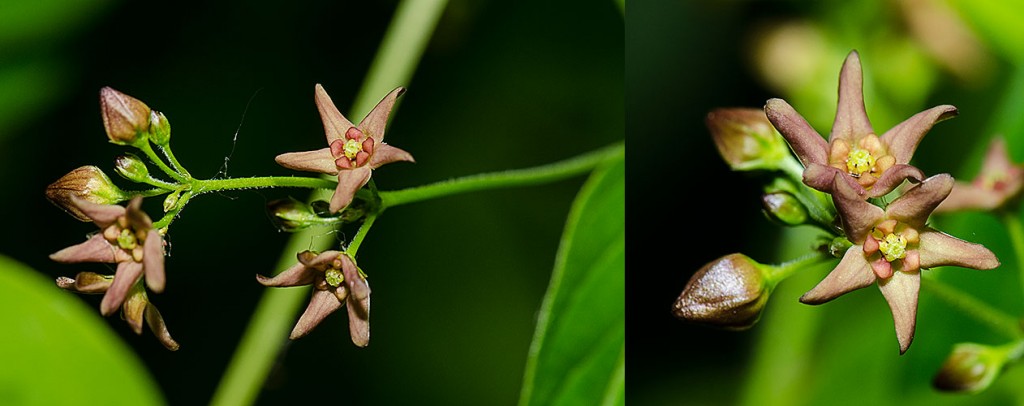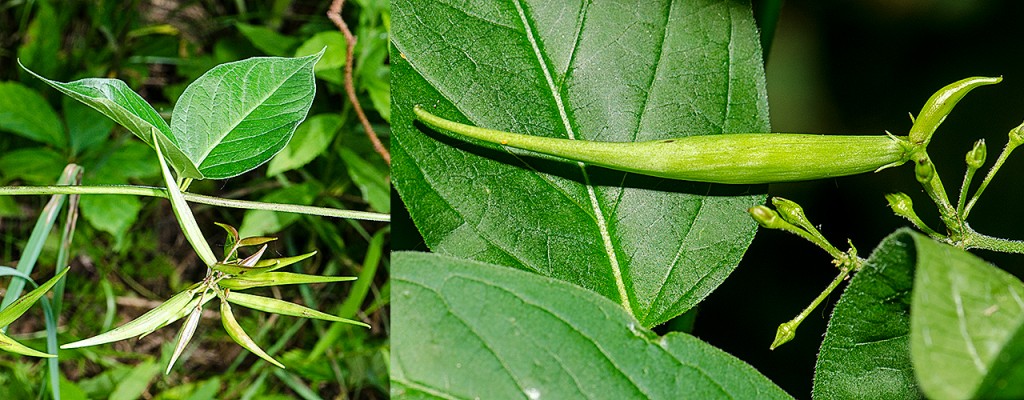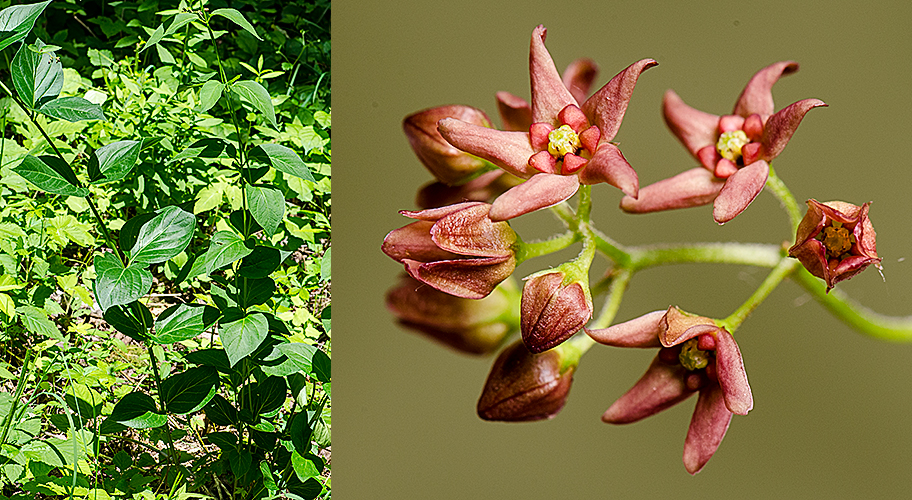Pale Swallow-wort (Vincetoxicum rossicum) also called European Swallow-wort or Dog-strangling Vine is an invasive species moving into southern Michigan. Dr. Reznicek writes, “East of Michigan, this species has become a terrible invasive; it should be stamped out wherever observed.” It was first recorded from Michigan in 1968 from Berrien County.
It is a vine in the Dogbane Family (Apocynaceae) that includes our Milkweed species. When not flowering it resembles Bittersweet (Celastrus spp.) but can easily be distinguished by its opposite leaves (Bittersweet has alternate leaves). Flowers are five petaled with the petals longer than wide. Normally they are pale pink but burgundy or dark brown flowers occur. It has narrow, pointed pods resembling true Milkweeds (Asclepius spp.).
Black Swallow-wort (Vincetoxicum nigrum) is another invasive similar to Pale Swallow-wort. Its petals are hairy on top and about as long as wide. It was first recorded from Michigan in the 1880s.
This aggressive plant will take over a field by choking out competing vegetation. It will out compete our native Milkweeds. This plant also impacts Monarch butterflies because it is toxic to Monarch larva. Monarchs will lay eggs on this species but they don’t survive to adulthood. Pale Swallow-wort appears to be allelopathic meaning that it alters the soil chemistry so seed from other species can’t germinate.
I’d like to thank John DeLisle from Natural Community Services for providing location information.
Copyright 2015 by Donald Drife
Webpage Michigan Nature Guy
Follow MichiganNatureGuy on Facebook




Oh no! Not another invasive. It seems like every time I learn about one, then I find it. I am in a battle to the death here (north of Chelsea) with garlic mustard and Japanese hedge parsley. Of course, we are also battling buckthorn, autumn olive, Asian bittersweet, multiflora rose, reed canarygrass, sow thistle and barberry. Sigh….
Susan,
It’s important to learn these invasive plants. If we can recognize them when they are moving in we have a chance to control them. Keep up the battle!